Mountain valleys tend to hold secrets: a waterfall in a box canyon, a natural hot spring in a forest clearing, a brambly patch of berries beneath a boulder garden. In the case of Lombardy’s Valtellina in northern Italy, the secret is some of the world’s finest red wines. I will debate anyone on this claim: the wines of the Valtellina Superiore DOCG are lithe, intensely aromatic and one-of-a-kind. They are reliably accessible in youth, but built for the long haul. Made from a localized clone of Nebbiolo called Chiavennasca, they harbor the aromatic profusion of Barolo, but have the kinetic grace and artful tannins of red Burgundy.
In short, these are wines that belong in the conversation.
But for all their qualities in the glass, there is something else about the wines of Valtellina Superiore that pulls me in: stone masonry. The wine-growing area stretches for 43 kilometers — from Ardenno to Tirano. Yet in that space, roughly 2,500 kilometers of dry-stone walls terrace the south-facing slope for viticulture. That’s roughly the distance from Denver to Philadelphia, or the length of Italy twice over.
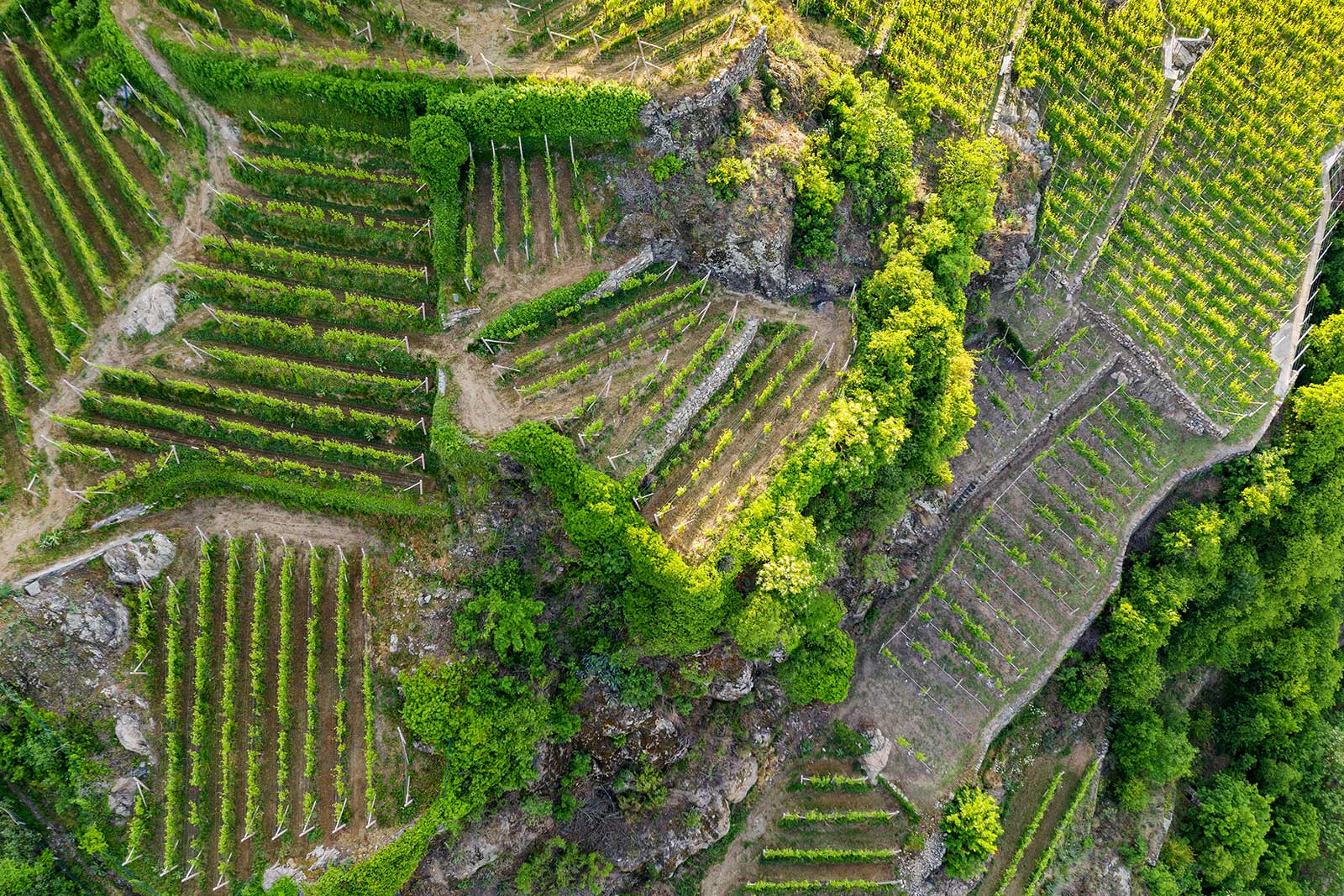
“Every terrace produces each Nebbiolo,” winemaker Marco Fay told me, underscoring the insane level of micro-terroir on display from the jumbled slopes of Valtellina. Hemmed in on the south by the snowcapped Bergamo Alps and on the north by the lofty Bernina Range, Valtellina is also one of the most spectacular places in the wine world. In fact, I would say “Valtellina has it all” if it weren’t for its lack of substantive white wines, the region’s only negative.
Our First-Taste Guide series has always been structured as a stepping stone to understanding the wine appellations of Europe. But this time — fueled by a passion I cannot suppress — we will be serving up an introduction and diving deeply into Valtellina Superiore. Sort of a Super Mega First-Taste Guide.
So tighten your boot laces … let’s start the climb.
Navigate this guide
3 Reasons Why You Should Try Valtellina Superiore
The average amount of labor required for a hectare of vines in Italy is between 200 and 250 hours. In Valtellina, that same hectare is between 1,000 and 1,500 hours.
- Alpine Nebbiolo is Ethereal – This is Nebbiolo of a different class: more gossamer than Barolo, and more mineral and berry-toned than Barbaresco. In fact, the earthiness of Valtellina Superiore is more akin to petrichor — the smell after a rainstorm — than it is to truffles or tar.
- On the Rise, and Getting Better – When I started following Valtellina Superiore years ago, the options on the American wine market were confined to four or five producers. Now, I need more than two hands to count them. People are taking notice, and the next generation of producers is worth watching.
- Support Heroes – Every time you buy a bottle of Valtellina Superiore, you are rewarding some of the wine world’s biggest risk-takers. Tending the terraces and vines of this steep, unforgiving place does not make economic sense to an outsider like me, yet the producers of Valtellina somehow prevail. For instance, the average amount of labor required for a hectare of vines in Italy is between 200 and 250 hours. In Valtellina, that same hectare is between 1,000 and 1,500 hours. With that in mind, you begin to understand the phrase “heroic viticulture,” which is used in Italy to describe regions like Costa d’Amalfi, Etna, Ischia, Valle d’Aosta and — perhaps most notable of all — Valtellina. The work of these winemakers not only preserves a precious tradition that dates back 2,000 years, but it also provides a civil service to the communities in the valley below in the form of erosion control. The word may be overused in our culture, but yes, buying a bottle supports heroes.
What is Valtellina Superiore DOCG?
Valtellina Superiore DOCG is a category of still red wines from a valley in Northern Lombardy, roughly a two-hour drive from Milan. It is one of two appellations in the valley that have been awarded Italy’s highest denomination for quality (DOCG). The other is Sforzato di Valtellina DOCG, which is made from partially dried grapes. Valtellina also employs the Rosso di Valtellina DOC for its “second wines” — wines made for a more immediate release with less aging requirements. We’ll save those two for another day.
While the disciplinare rules for Valtellina Superiore require the wine to be 90% Nebbiolo (with the balance comprised of local varieties Brugnola, Rossola and Pignola*), most are in fact 100% Nebbiolo. The minimum aging requirement is two years after vintage with at least one year in oak or chestnut. Riservas mandate a minimum of three years of aging.
*According to noted Italian grape expert Ian d’Agata, Brugnola and Pignola, while obscure, appear to be genetic cousins of Nebbiolo.
Valtellina’s Location, Soil and Climate
Valtellina stretches from the northern terminus of Lake Como to the city of Tirano in the east, but the appellation for grape-growing is a 45-km stretch centered around the city of Sondrio. Look at a topographical map of Northern Italy and you’ll recognize Valtellina by the unique way it cuts against the north-south grain of the Alps. This unusual orientation is a blessing for viticulture. For one, it provides an uninterrupted south-facing exposure ideal for ripening grapes, as well as apples and stone fruits on the lower reaches. From Lake Como, a warm wind known as the breva helps to maintain air circulation and reduce disease pressures throughout the vine’s annual growth cycle.
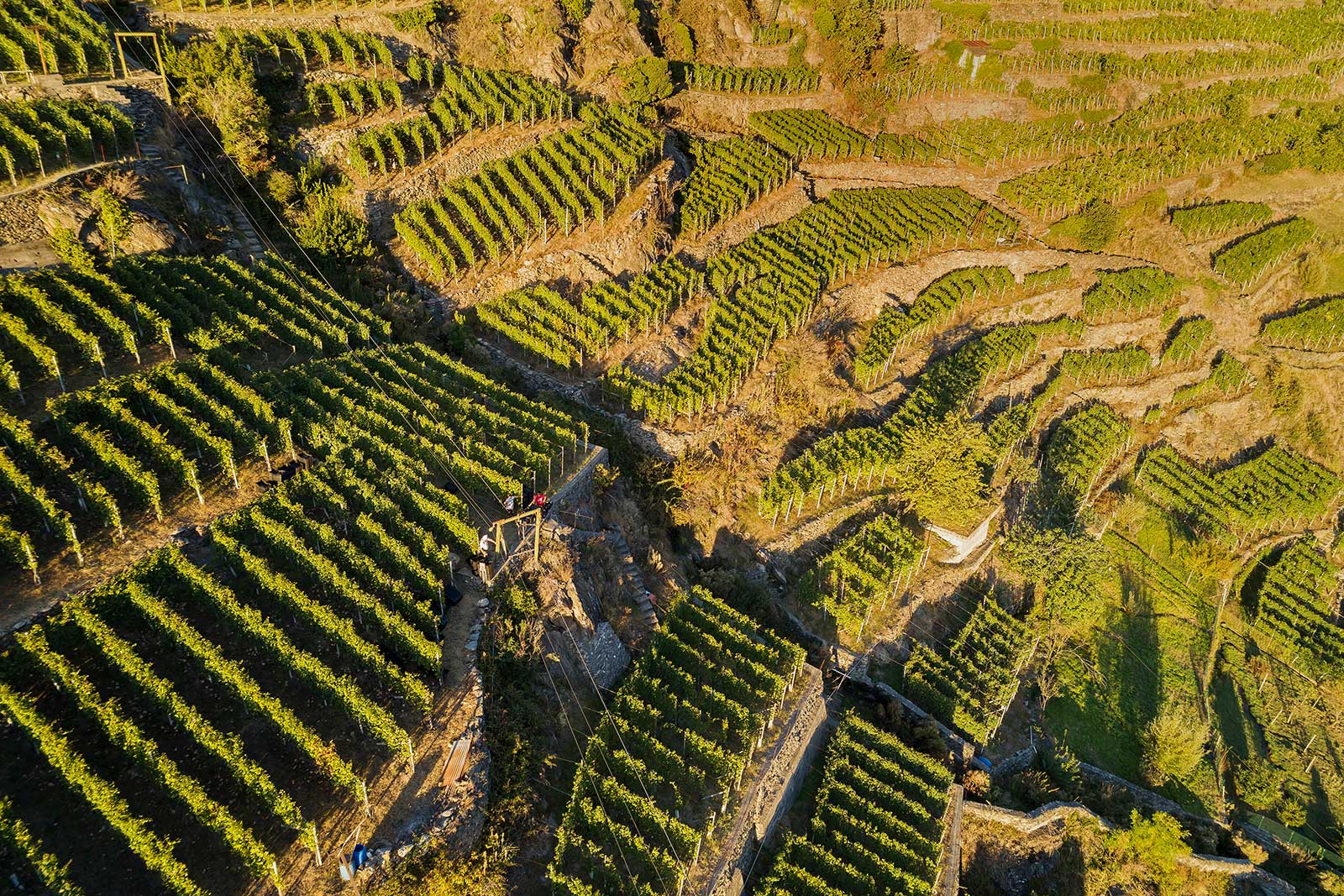
But this east-west orientation also creates a warmer-than-expected microclimate, as the Bergamo Alps block humid air and wind from the Po River Valley while the Bernina Range blocks much of the inclement weather and heavy rains from Switzerland. Strangely, Valtellina has a similar average summer light index as Pantelleria, the sun-baked Sicilian island off the Tunisian coast. Cacti are a common sight among the vines.
Geologically speaking, Valtellina is far from straightforward. The topsoil is shallow and mostly comprised of broken-down schist with some sandy granitic material. But Valtellina’s vineyard soils can also include silt, according to winemaker Marco Fay, who commissioned a soil study of his vineyards.
Silt is simply sediment deposited by a body of water, but it seems strange to discover it on a mountain slope. That is, until you consider how the terraces were initially constructed — in some cases, more than 2,000 years ago — and how they continue to be maintained: land was leveled, stones were gathered, walls were erected, and where necessary, the soil was replenished through backfill from sites around the valley.
While it is tempting to theorize that the silty soil came entirely from the valley floor, Fay thinks much of it originally came from higher up.
If you see the northern side of the valley, the first part is very steep, then flat, then steep again. In that flat part, we had a lot of lakes, which came from the [melting] glacier. It is very probable that the silt we have is from the bottom of the lake, and then the soil came from the top, and we moved the soil toward the bottom [because it was easier]. Also, our soil does not have any round rocks, which would be typical of [alluvial deposits] soil from the bottom of the valley. If we used the soil from the bottom, it would be like Holland!” –Marco Fay, Vini Sandro Fay
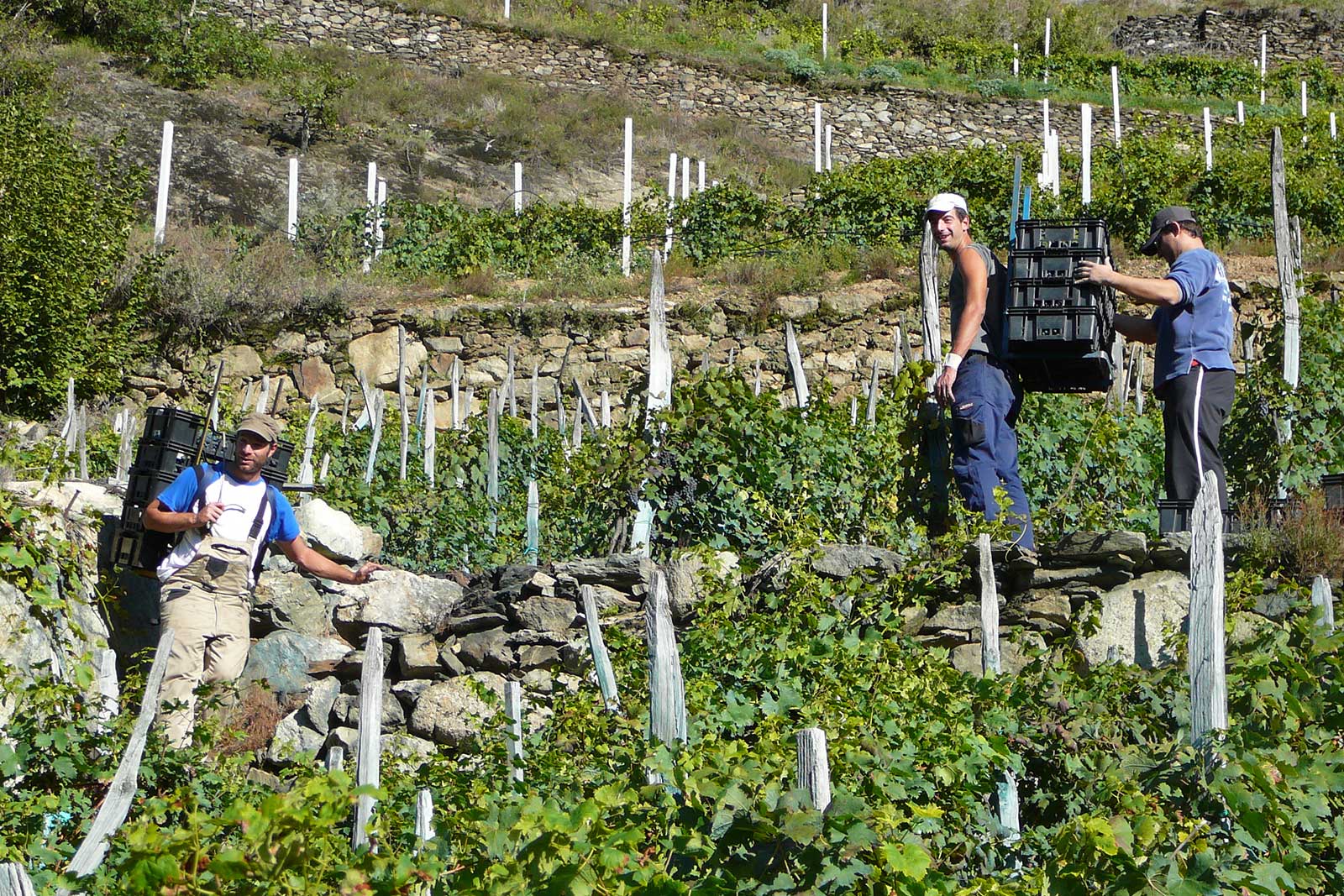
The end result is a melange of soil ingredients that are thin as top soil, and well draining — very different than the lime-rich marl of the Langhe, where Barolo is produced. This crucial balance in water retention means that the vines in Valtellina get enough water to avoid hydric stress, but not enough to produce abundant yields. The grapes they do produce are of superb concentration and quality.
The Art of the Dry Stone Wall
The terraces of Valtellina are not just here and there: they are everywhere. The terraces are the terroir, and while nature certainly collaborates through sunlight, soil, wind, rain and topography, the differences from one glass of Valtellina Superiore to the next are just as much the result of decisions made by hundreds of generations of Valtellinesi.
“The first mission of the Valtellina winemaker is to maintain the terroir,” Cristina Scarpellini of Tenuta Scerscé told me, noting that without constant upkeep of the terraces, a mixture of erosion and wild plants would overtake the hillside and make viticulture impossible.
Scarpellini knows firsthand how much devotion is required in Valtellina, especially since she started the winery from scratch in 2008 after a career practicing law. For her, this was never a Chiantishire adventure of fancy: “I changed my life because of Valtellina. I had to sink my roots in deeply. The deeper you go, the more stable you become.”
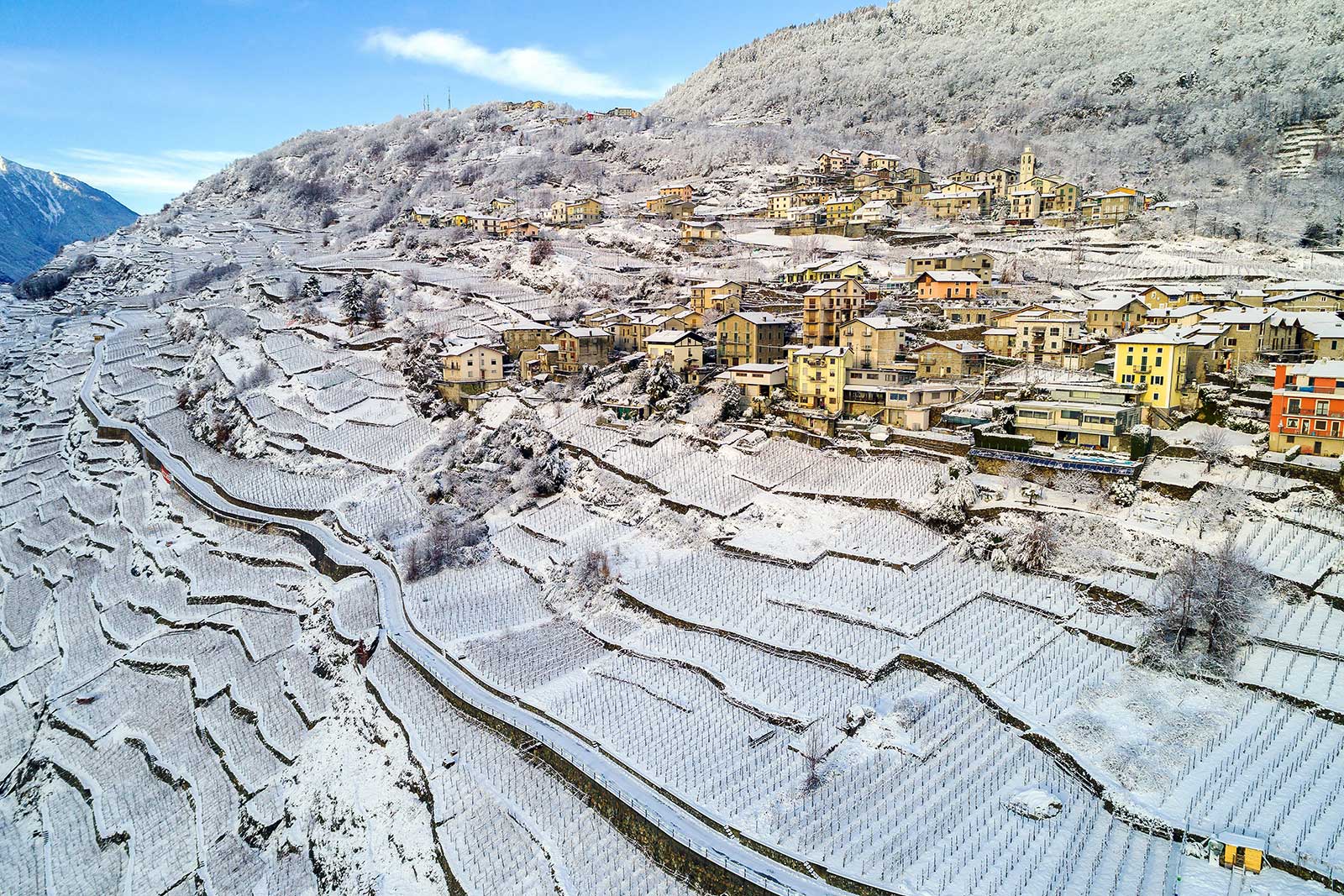
Her analogy is deliberate because everything in Valtellina, it turns out, depends upon stability, and despite recent commercial success, the situation remains precarious. That’s because winemakers are responsible for maintaining the terrace’s dry-stone walls — not the municipalities. While they directly benefit from these walls, maintaining them adds to already-steep labor costs and time, especially in the event of a major rain, which can washout the stones.
Scarpellini is the President of the Fondazione Provinea, a local foundation focused on the conservation of these walls. Her hope is to someday have an independently funded, mobile stone-masonry team that can take charge of major wall repairs. On the subject of wall maintenance, the valley’s winemakers agree they need cooperation to ensure their mutual survival.
“Everything is on the shoulders of the producer, and Valtellina is very fragile,” says Isabella Pelizzatti Perego, whose family-run estate, ARPEPE, has helped define a new era in quality for Valtellina wines. Pelizzatti Perego is Vice-President of Fondazione Provinea, and was instrumental in efforts to earn recognition for the dry stone walls on UNESCO’s Intangible Cultural Heritage list. But despite the honor, more needs to be done, especially when it comes to funding.
“Other regions, like Liguria with Cinque Terre, have been able to capture more attention [and get funding for preservation],” she adds. “So we need to keep working together to find a way for more funding. It’s a complicated issue.”
Given these cost — both material and labor — Valtellina wines are an excellent value, especially when compared to the top-flight wines of Barolo.
Subzones and Elevation: the Great Debate
There are five geographic subzones within Valtellina Superiore that can be appended to the label as long as all of the fruit comes from that particular zone. These zones are Maroggia, Sassella, Grumello, Inferno and Valgella.
While it is tempting to tease apart differences in the glass from one subzone to the next, I’ve come to believe — and numerous winemakers have verified to me — that Valtellina’s variety of elevations largely renders this exercise moot. Vines achieve different levels of photosynthesis at higher elevations than they do at lower ones, which — when combined with the variables of individual terrace size, exposure to humidity from the Adda River, and wind exposure — means unfathomable complexity.
Even the winemakers seem mystified by the results.
For their majestic wine from the Carterìa village, Sandro Fay sources grapes from 120 different terraces. “Carterìa is our most tannic wine,” Marco Fay told me. Then he smiled: “If you ask me ‘how come?’ I will tell you ‘I don’t know.'”
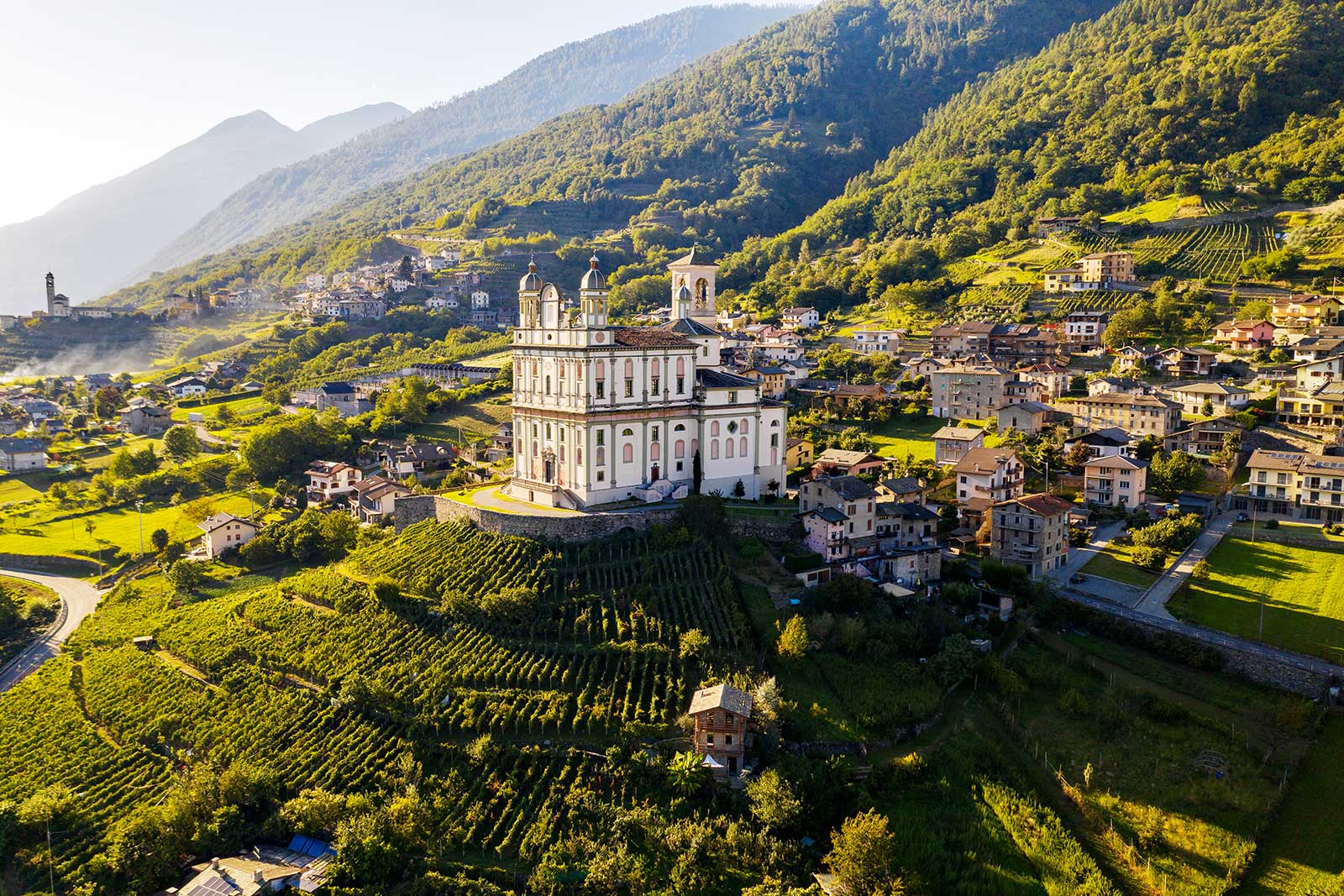
Generally speaking, the middle altitudes are ideal for Valtellina Superiore, while higher vineyards are often reserved for Sforzato, and lower vineyards supply grapes for Rosso di Valtellina. In the middle band, temperatures can get warm enough to shut ripening down for a few weeks in summer, delaying harvest into October. Meanwhile, the grape clusters yielded from the well-ventilated, high-elevation vineyards are better suited for the air-drying process used in Sforzato.
But there are exceptions. Within Grumello you can taste Dirupi’s Valtellina Superiore, made from a majority of high-elevation fruit, and ARPEPE’s Buon Consiglio, made entirely from low-elevation vineyards right above the city of Sondrio. Their differences in the glass are startling, with Dirupi’s wine tasting like a high-wire act, and ARPEPE’s wine smothering the senses in comfort from its roundness.
How to best inform consumers of these differences is still being debated. Cristina Scarpellini of Tenuta Scersce would like to see a named cru-model put in place, similar to Barolo, where geographic indications are done on a smaller, more acute scale. Marco Fay, however, mused that a Village model — similar to Burgundy — might be the preferred route for Valtellina.
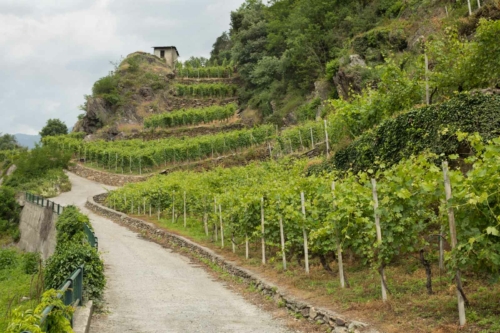
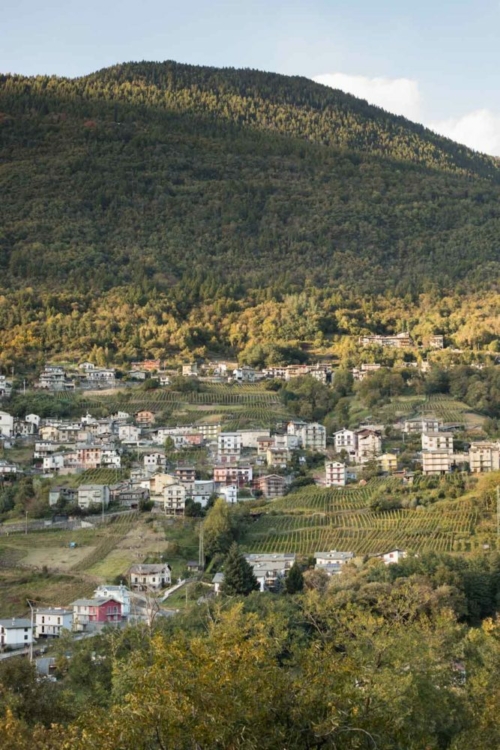
“Nowadays, with more wines coming from little producers, the differences we can find within the subzones is getting wider and more complicated to explain,” says Isabella Pelizzatti Perego of ARPEPE.
But as she also points out, the subzones are historically and culturally important, and they do have subtle differences in the maturation of the grapes. “Generally speaking, Sassella and Valgella are a bit more prominent [to the wind],” she observes. “While Grumello and Inferno are a bit more sheltered.”
Meanwhile, Maroggia is a bit of an oddity. At only 25 hectares, its vines belong mostly to a single consortium — Assoviuno — and the distribution of these wines is largely local.
Nebbiolo’s Birthplace?
The wines of Valtellina come almost exclusively from a single grape — Nebbiolo, which is one of the world’s most compelling varieties. Valtellina’s version is known as Chiavennasca, which I thought for sure was a geographic reference to the northern city of Chiavenna near the border with Switzerland. There, you’ll find vineyard terraces to match the spectacle of Valtellina, albeit in much more rustic shape. However, Isabella Pelizzatti Perego assured me that the name of the grape is a derivation of ciù vinasca, a reference in local dialect to the grape’s yields. (Never assume!)
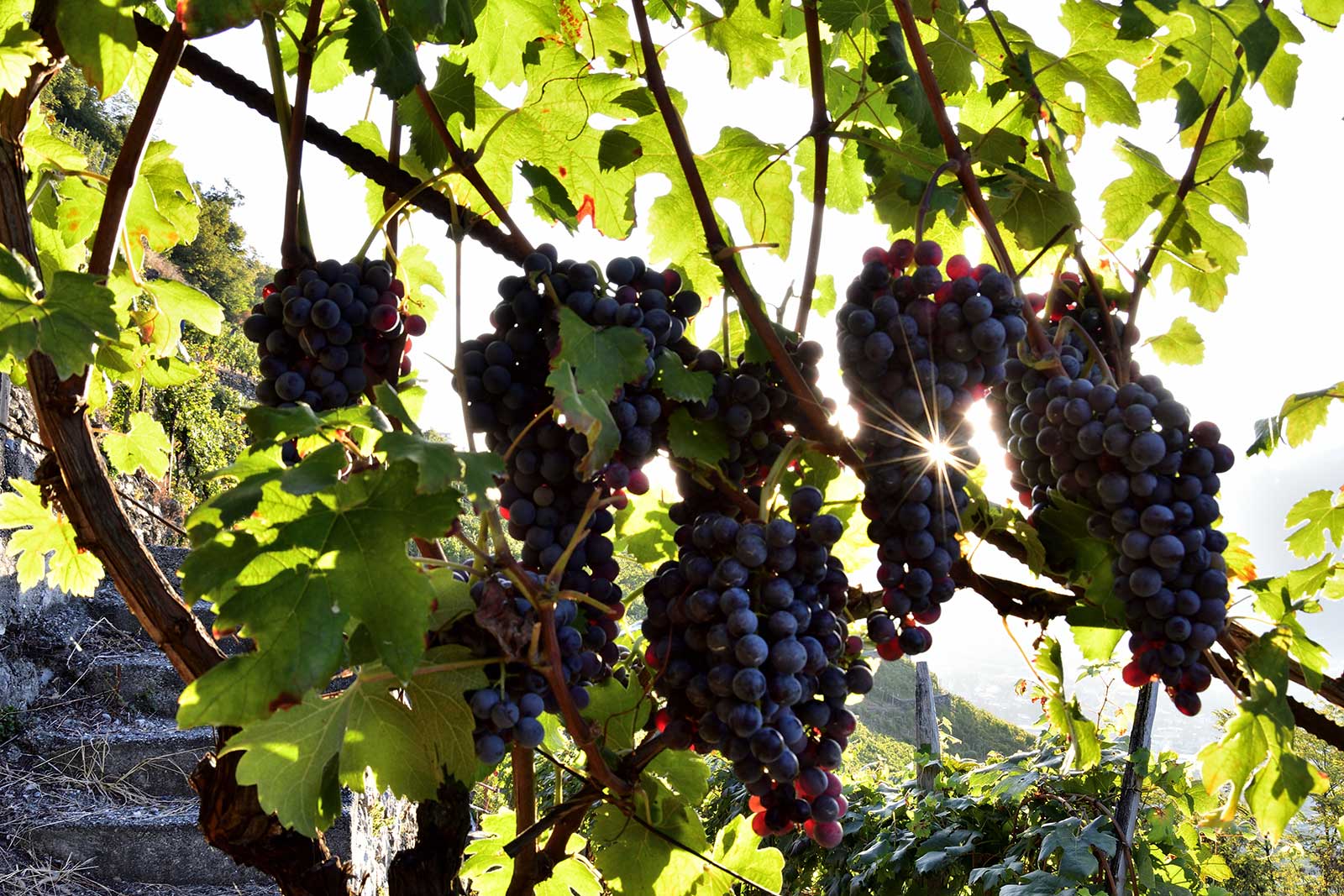
What is becoming clear is that Valtellina is likely the origin of Nebbiolo, a rather startling premise for the wine world given the grape’s close ties to Piedmont in northwestern Italy, where Nebbiolo became an international star. The grape has what is called a “high degree of intravarietal variability,” meaning its genetic code easily mutates into different forms. A 2006 study of the valley’s vineyards revealed a wealth of genetic diversity in Valtellina that exceeded that of Valle d’Aosta and Piedmont.
“That can only happen with time,” Pelizzatti Perego told me, an indicator that the grape has simply had more time in Valtellina than anywhere else.
What Valtellina Superiore Tastes Like
At its apex, Valtellina Superiore can carry the profundity of both Barolo and Burgundy, with a mineral finish that could only come from the mountains. On the nose, Valtellina Superiore will be familiar to Nebbiolo drinkers: the tones are reminiscent of black cherries and/or raspberries, earth, black licorice and sometimes roses. I almost always detect a mineral fragrance that is strongly suggestive of petrichor — that wonderful, rich smell that comes from the earth after a rainstorm. To me, this aroma would give Valtellina Superiore away in a blind tasting.
However, on the palate Valtellina Superiore exhibits quite a different character than other Nebbiolo wines, and here is where I’m reminded of the litheness of a Morey-St-Denis or even Chambolle-Musigny. The best Valtellina Superiore wines feel like the Viennese waltz, effortlessly gliding from point A to point B. The tannins hold the wine together, but never stick their foot out to trip up the dance, even in youth.
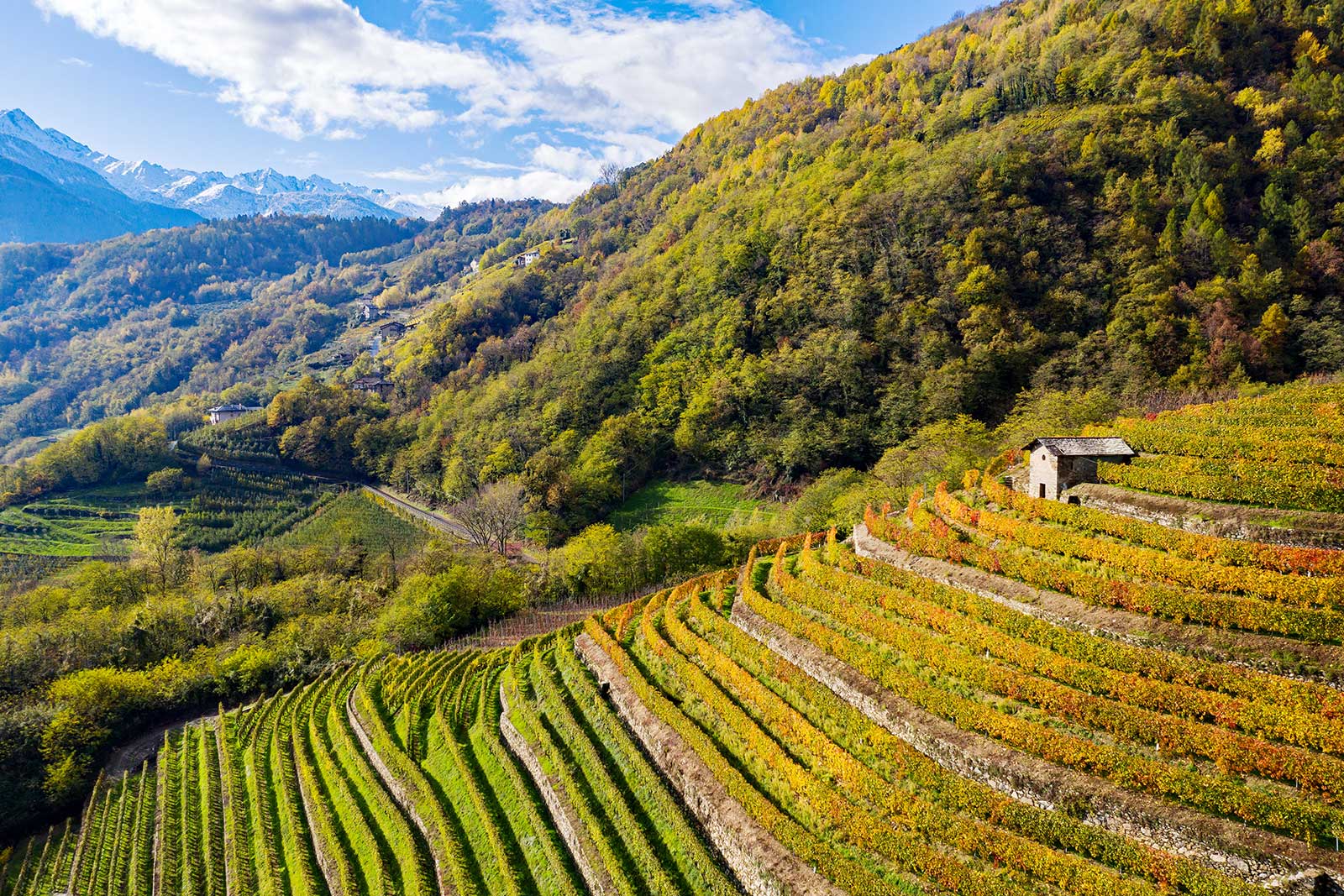
The oldest Valtellina Superiore I have tasted was at the 20-year mark (the 1997 ARPEPE “Rocce Rosse” Valtellina Superiore Sassella). It clearly demonstrated that the best Valtellina Superiore wines have no problem holding onto their secrets and staying vital for decades.
Your First Taste
As noted before, the scene in Valtellina Superiore is becoming more and more dynamic. Several new producers have emerged in the last 10 years, in some cases, the result of small winegrowers setting off on their own after decades of selling their grapes to Nino Negri (the largest producer in Valtellina) or one of the co-ops.
“When I started working with my father and my mom in 2001, we were roughly 20 producers or so,” notes ARPEPE’s Isabella Pelizzatti Perego. “And now there are more than 50 producers. Some are very small, but I am very happy about this situation. To be honest, I feel like its a personal success for all of us.”
Choices abound for your first taste. Here is my guide to those producers and their wines. Wines are rated on a scale of one to five stars.
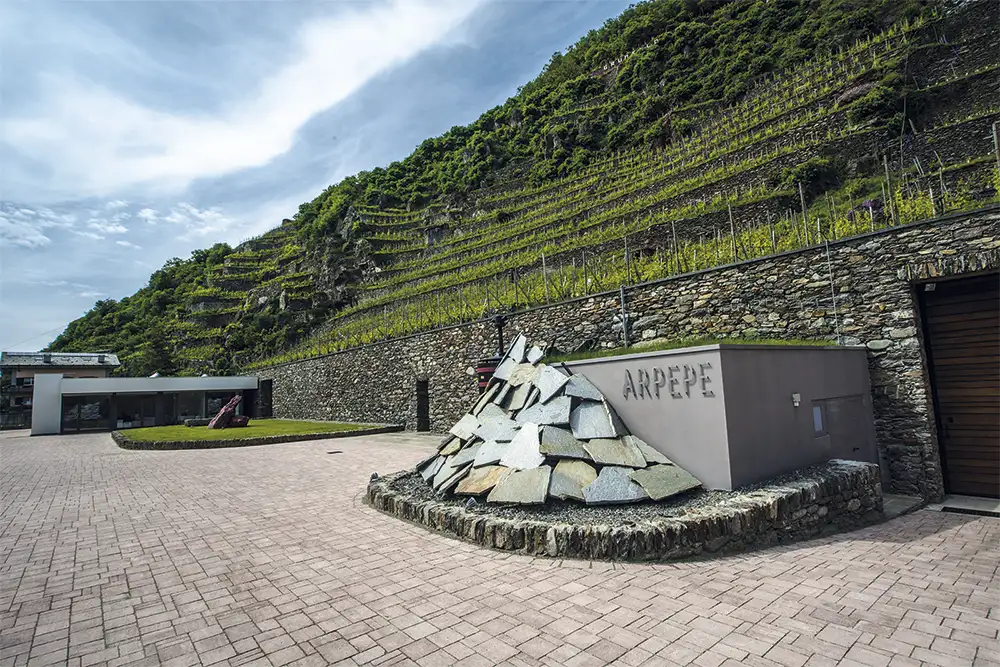
ARPEPE
ARPEPE is the icon of Valtellina. Their vineyard sites and ultra-traditional winemaking methods would alone give them an advantage. But what really sets ARPEPE apart — even from a majority of Barolo producers — is how long they voluntarily age their wines before release. This is particularly acute with their top-end riserva cru wines (those with a Gothic font), which are only released in ideal vintages and are among the greatest red wines in Italy. There are six in total: “Sesto Canto” Inferno, “Buon Consiglio” Grumello, “Sant’Antonio” Grumello, “Ultima Raggi” Sassella, “Nuova Regina” Sassella and most famous of all, “Rocce Rosse” Sassella.
For these wines, ARPEPE ages them for two-and-a-half to five years in 50 hectoliter casks comprised mostly of chestnut, a wood that is banned in Barolo but whose tannin profile, they feel, imparts a special magic with mountain Nebbiolo fruit. When the wine is bottled, they often store it for a few more years until they are happy with how it is showing, and then it is released. For instance, the 2009 vintage wasn’t released until 2017.
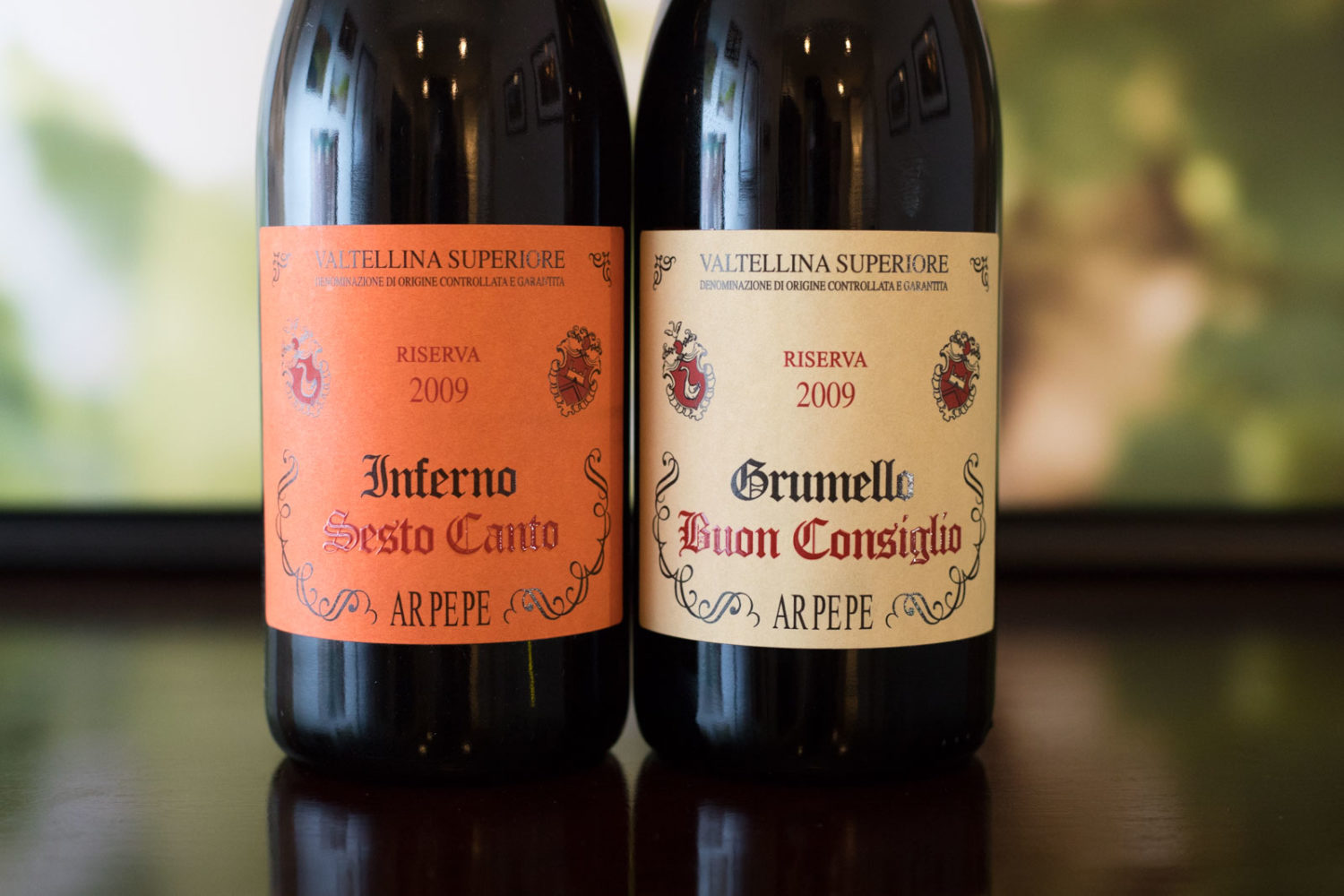
It is hard to argue with the results. The “Rocce Rosse” often steals the headlines. As you drive up the valley, you can clearly see the “red rock” wall with the letters ROCCE ROSSE spelled out over the cru — an imposing vineyard with iron-rich soil, thus the name. The 2007 vintage (★★★★★) is a sublime wine, with endless detail.
I was equally impressed with the 2009 “Sesto Canto” Inferno Riserva (★★★★★), which takes its name from the third circle of hell (the vineyard is on the third ring road of the Inferno subzone). A tiny vineyard, it yields a wine of densely compacted aromas that yearn to be teased out over a long evening. It’s signature appears to be a faint resiny aroma that lingers on the finish.
Lastly, look for the 2009 “Buon Consiglio” Grumello Riserva (★★★★★), a wine that is perhaps ARPEPE’s most artful, delivering supple and gentle tones reminiscent of raspberries, star anise, petrichor, potting soil and graham crackers. If you drink this wine, do yourself a favor: fight the temptation to drain the bottle, and save a glass for a second night. It’s transformation to tones of blood orange and mintiness — while retaining its Nebbiolo typicity — is crazy to witness.
In average vintages, ARPEPE bottles its Sassella, Inferno and Grumello plots into singular subzone wines called “Stella Retica,” “Fiamme Antiche” and “Rocca de Piro,” respectively. Even these wines enjoy beyond-the-limit aging with 2 years in wood, and are held on to at the winery for three additional years.
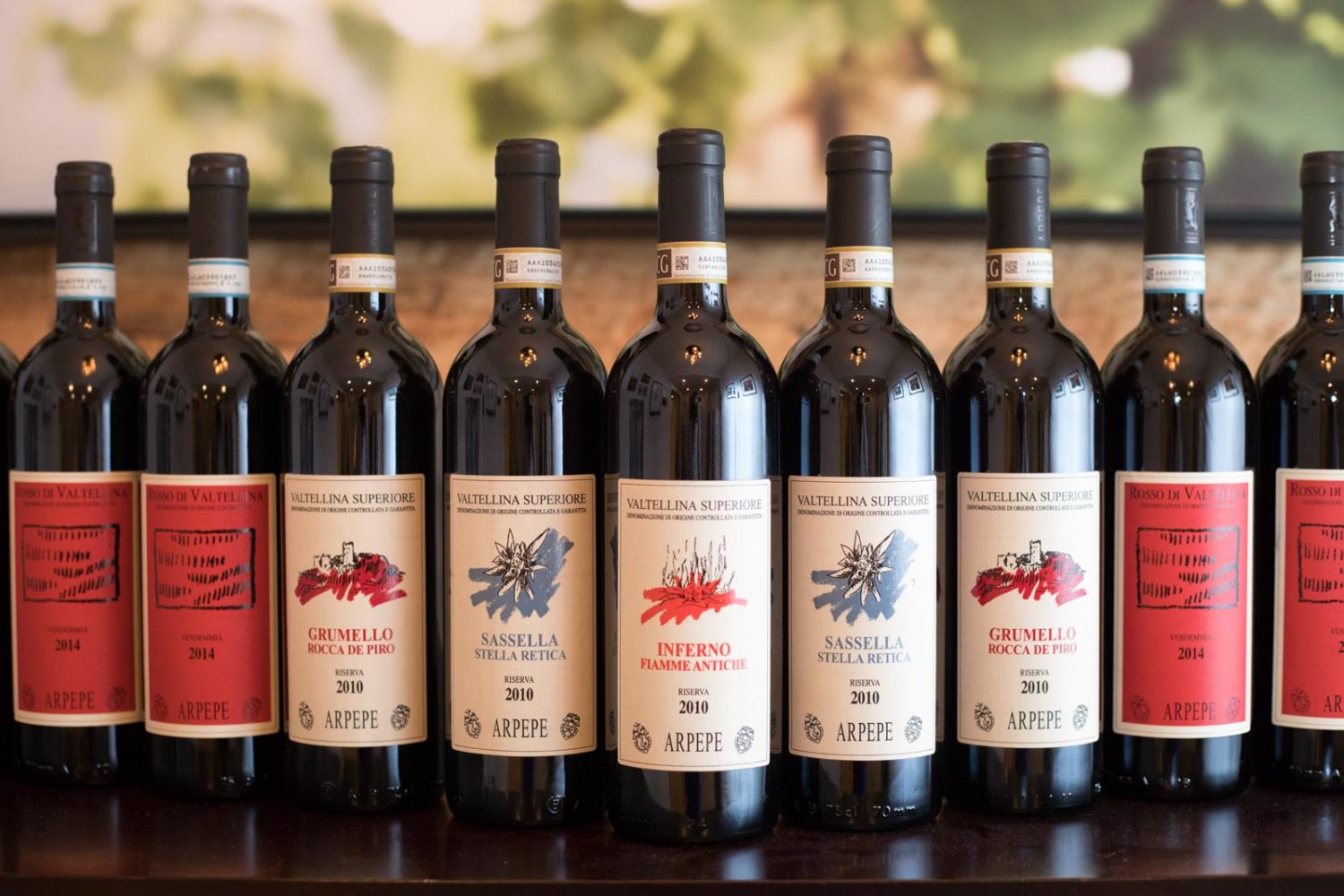
Bare in mind: if ARPEPE is your first taste of Valtellina, you are starting at the top — they are one of Italy’s top five wineries in my opinion. In fact, they are one of only four producers that I am personally cellaring for multi-decade aging. This is not a commitment I take lightly, but their wines are that captivating to me.
Sandro Fay
Lead by second-generation winemaker Marco Fay and his sister, Elena, this Valgella subzone-focused producer makes what I feel are the most Barolo-like representations of Valtellina Superiore. Their selection of wines also showcase the depth of Valtellina’s terraced-by-the-thousands terroir.
There are four wines to look for from Sandro Fay: one Sassella (“Il Glicine”) and three Valgella (“Carterìa,” “Ca Morei” and “Costa Bassa”).
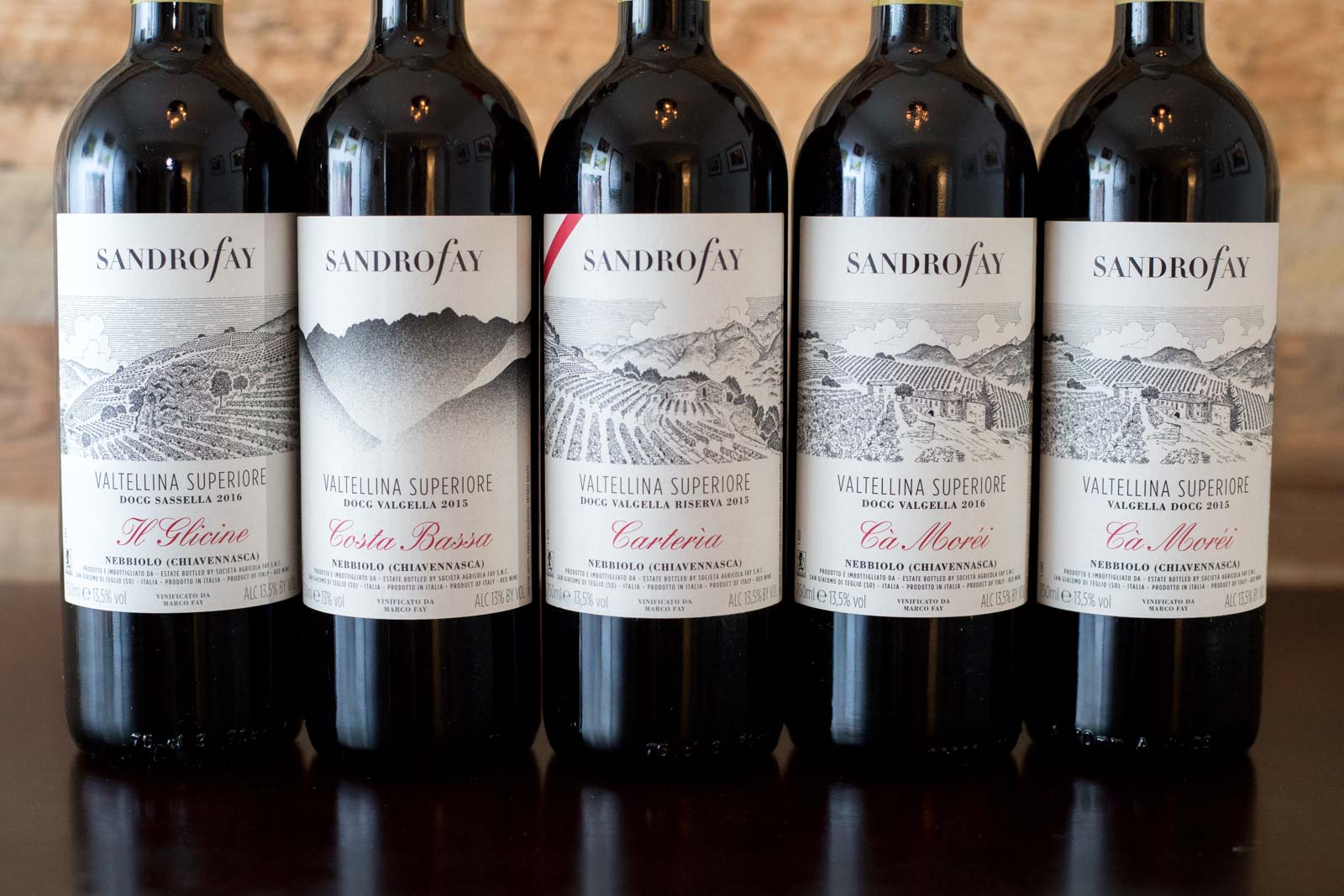
“Costa Bassa” (★★★★ 1/4) is the simplest, with the brightest and easiest fruit flavors and tones. This is due to the location of its vineyards, toward the lower portion of the Valgella subzone near Carterìa. Years ago, I purchased three bottles of the 2010 vintage “Cà Moréi” Valgella (★★★★ 3/4) and have slowly enjoyed their evolution over five years time. This is where Nebbiolo’s famous tannins show up, and where comparisons to Barolo are most appropriate, in my opinion.
However, Sandro Fay has solidified their stature in Valtellina’s top tier with “Carterìa” and “Il Glicine,” two vineyards that would certainly be given Grand Cru status if the area had such classification. The 2015 “Carterìa” Valgella Riserva (★★★★★) — Fay’s lone Riserva — undergoes 12 months of aging in small and large oak casks, as well as 15 additional months in bottle before release. I could fill a sheet of paper with notes about its complexity and depth: it is fruity yet umami, taut yet flexible, mineral yet citric. Carterìa is comprised of 120 terraces, so while it is a single-vineyard wine, Marco Fay prefers to call it a blend because of the intimacy of each terrace’s details, and what they contribute.
Fay’s one non-Valgella Valtellina Superiore is “Il Glicine” Sassella (2016 – ★★★★★), which comes from a series of postage-stamp vineyards tucked into the northwestern corner of Sassella, above the city of Sondrio. The winemaking here is more straightforward — just 12 months in 500L oak barrels — but the results to me are just as shape-shifting. The aromas are wild, eager and peppery, yet on the palate the wine exhibits an easy grace that calms the nerves. I especially love the whispery finish that resonates with tones of petrichor. For a first taste of Valtellina Superiore, this is the perfect selection.
Dirupi
From Barolo to Burgundy. I’ve always felt that if there was a line between these two great appellations, Valtellina Superiore was in between, satisfying both desires. If Sandro Fay’s wines reside on one end of the spectrum, than Dirupi is on the other side, and I am speculating that much of this has to do with Dirupi’s high-elevation vineyards in Grumello (between 500 and 575 meters) which appear to offer a certain kind of elegance that reminds me of the Côte de Nuits.
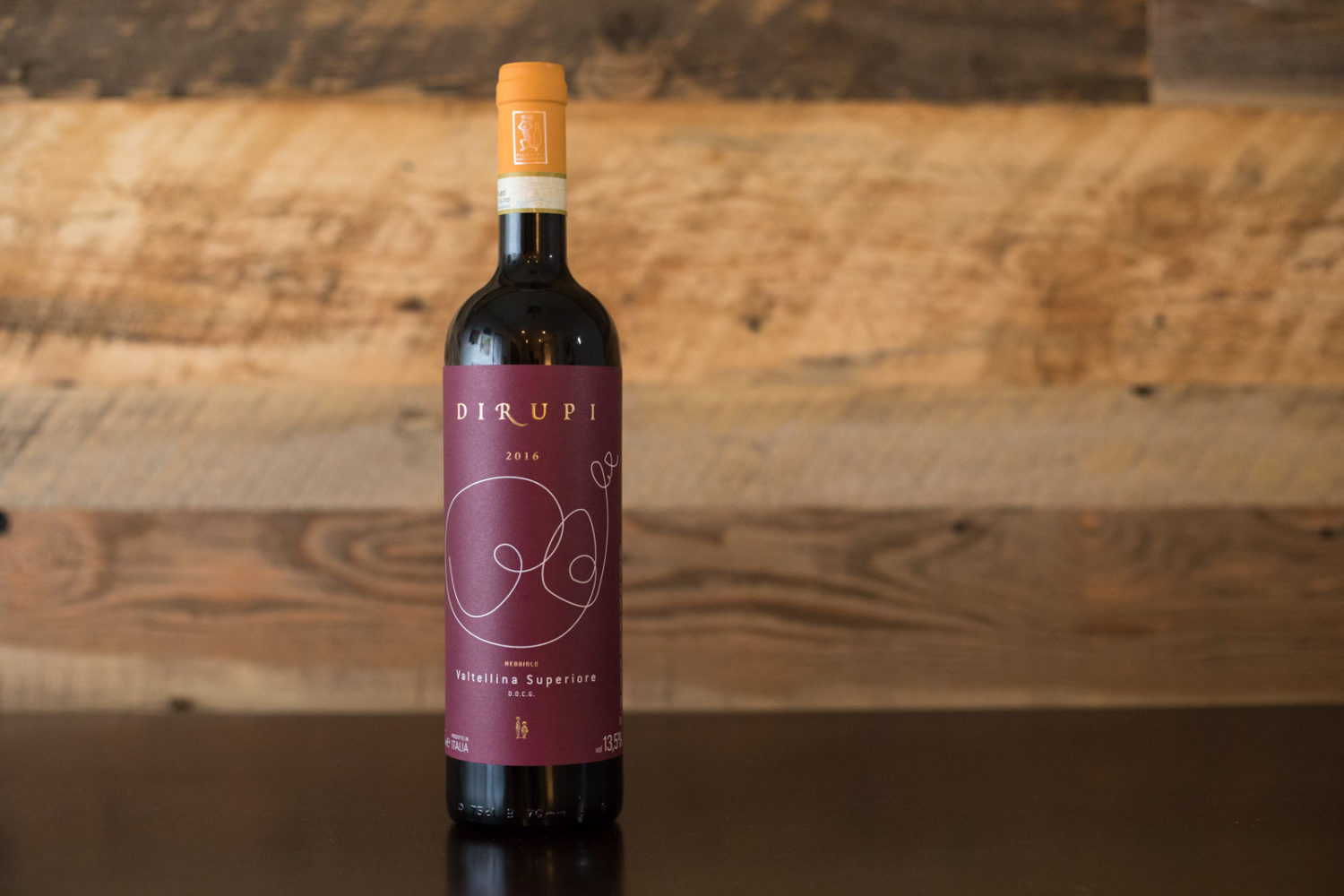
Started in 2004 by two local friends, Davide Fasolini and Pierpaolo di Franco, Dirupi produces four Valtellina Superiore — a blend of terroir, a Grumello, an Inferno and a Riserva, which is also a blend of terroir — but due to availability where I live, I was only able to sample the 2015 Dirupi Valtellina Superiore (★★★★★). And what a wine it is. Exhibiting tones more reminiscent of strawberries, blood oranges, rainstorm and marzipan than the usual Nebbiolo trifecta of cherries, roses and tar, Dirupi’s high-toned, entry-level Valtellina Superiore shows tremendous potential.
Dirupi’s wine represents something important here, because it adds a dimension to the appellation that isn’t there otherwise. The high-altitude vineyards are often left for Sforzato due to the way the grapes ripen, but here, we can see how Valtellina Superiore can exhibit something fresh and new, without losing its typicity.
Tenuta Scerscé
Another producer exhibiting tons of potential is Tenuta Scerscé, a relatively new winery with holdings mostly in Valgella, as well as a small parcels in Sassella, Inferno and near Tirano. At the moment, there is one Valtellina Superiore called “Essenza,” which is a 50/50 blend of fruit from Valgella and from vineyards outside the subzone toward the east. But winemaker Cristina Scarpellini told me that she has big plans for upcoming releases: there will be an Inferno and Sassella with the 2018 vintage, as well as a Valgella Riserva from 2017 (until now Sandro Fay’s “Carterìa” was Valgella’s only riserva).
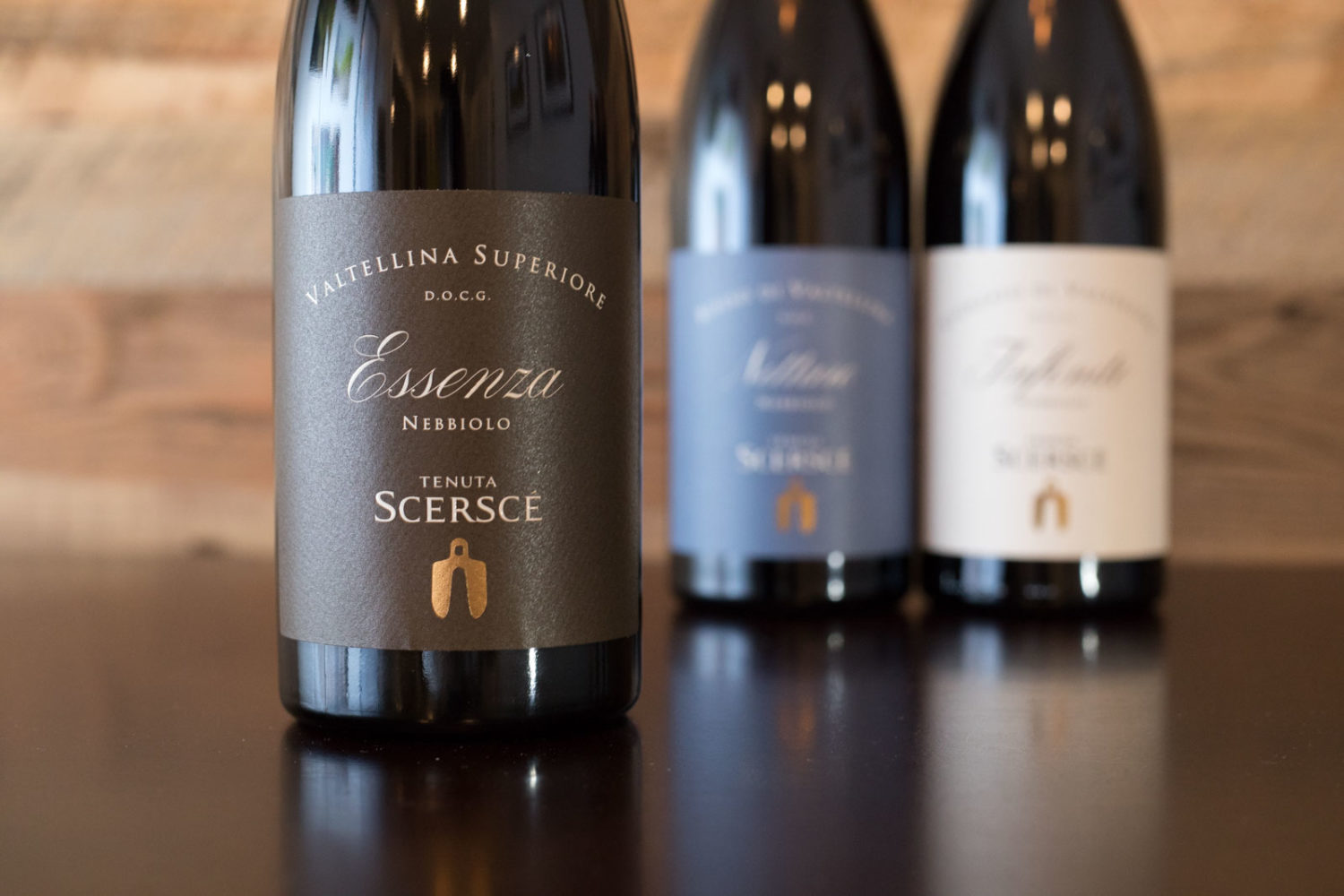
The 2016 “Essenza” (★★★★ 3/4) is another top choice for your first taste, demonstrating how vivacious Valtellina Superiore can be. With its spry quality — and aromas that struck me like a breath of fresh air — this is a wine of mountain origins through and through. The delicate tones recall classic Nebbiolo flavors, but mild and mineral tannins won’t question your choice to open and drink the wine young.
Tenuta Scerscé also makes the smoothest, most elegant Sforzato I’ve sampled from Valtellina, called “Infinito” (★★★★★).
Barbacàn
To get a sense for what its like to work in the vineyards of Valtellina day in, day out, follow Barbacàn on Instagram. Their frequent stories are punctuated by vertigo inducing views from the terraces of Valgella, as well as periodic demonstrations of wall repair and the proper way to lip-sync to Italian pop songs. Clearly, these guys are having fun making their wine.
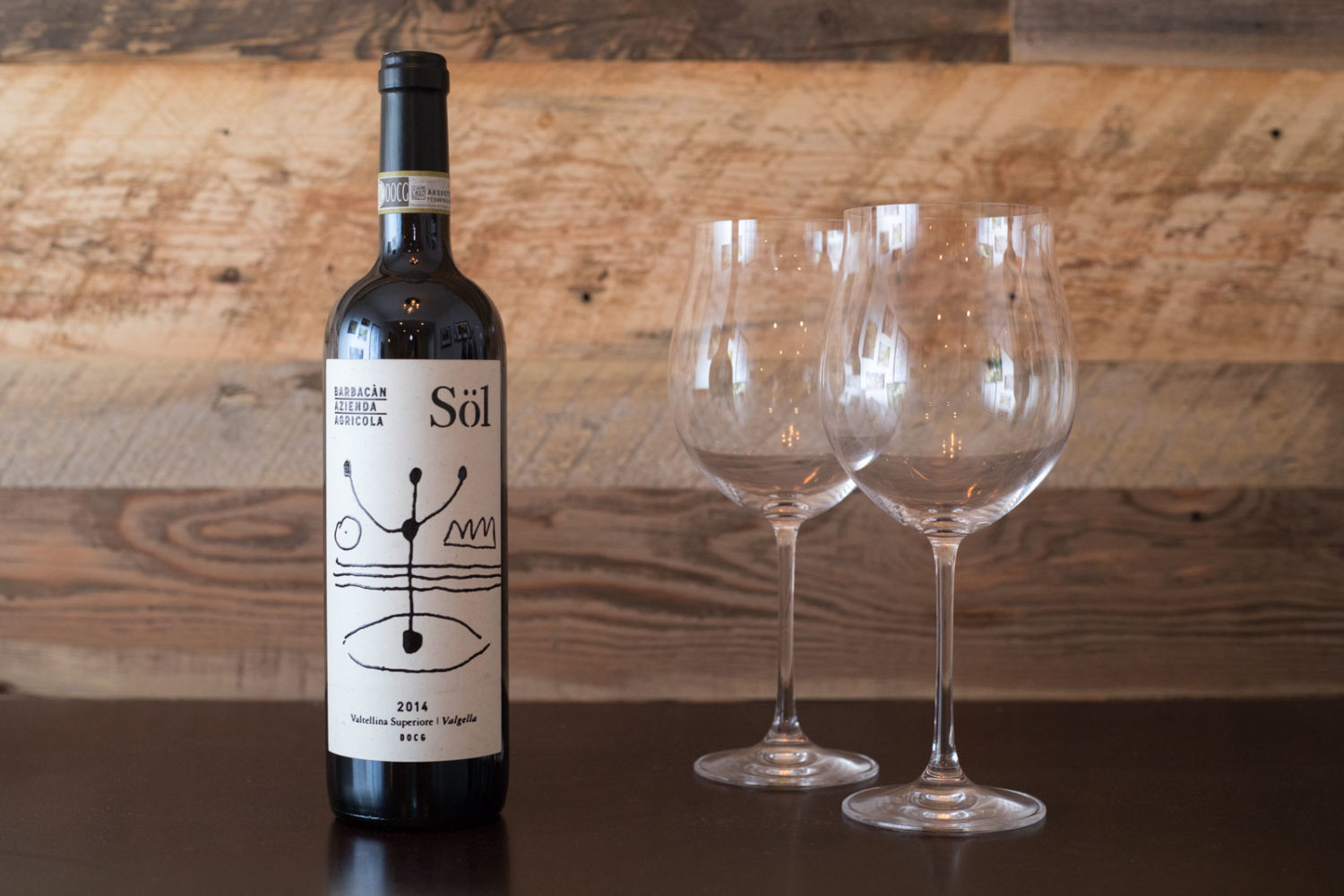
Barbacàn’s Valtellina Superiore is called “Söl” (★★★★★), a wonderful example of Valtellina’s Burgundian tendencies, while retaining the classic interplay of bitter, sour and savory fruit tones from Nebbiolo. At the moment, Barbacàn is a Valgella specialist — with scattered holdings above San Giacomo and Caselli — and organic, too. Alongside Dirupi and Tenuta Scerscé, they represent a promising new guard in the valley.
Aldo Rainoldi
One last recommendation are the wines of Aldo Rainoldi, one of Valtellina’s more established and historic estates, with vineyard holdings in four of the five subzones. As a result, they have an extensive portfolio that is only exceeded in breadth by the valley’s biggest producer, Nino Negri. They offer three Valtellina Superiore from Sassella (two riservas and a normale), plus two each (riserva and normale) from Grumello and Inferno.
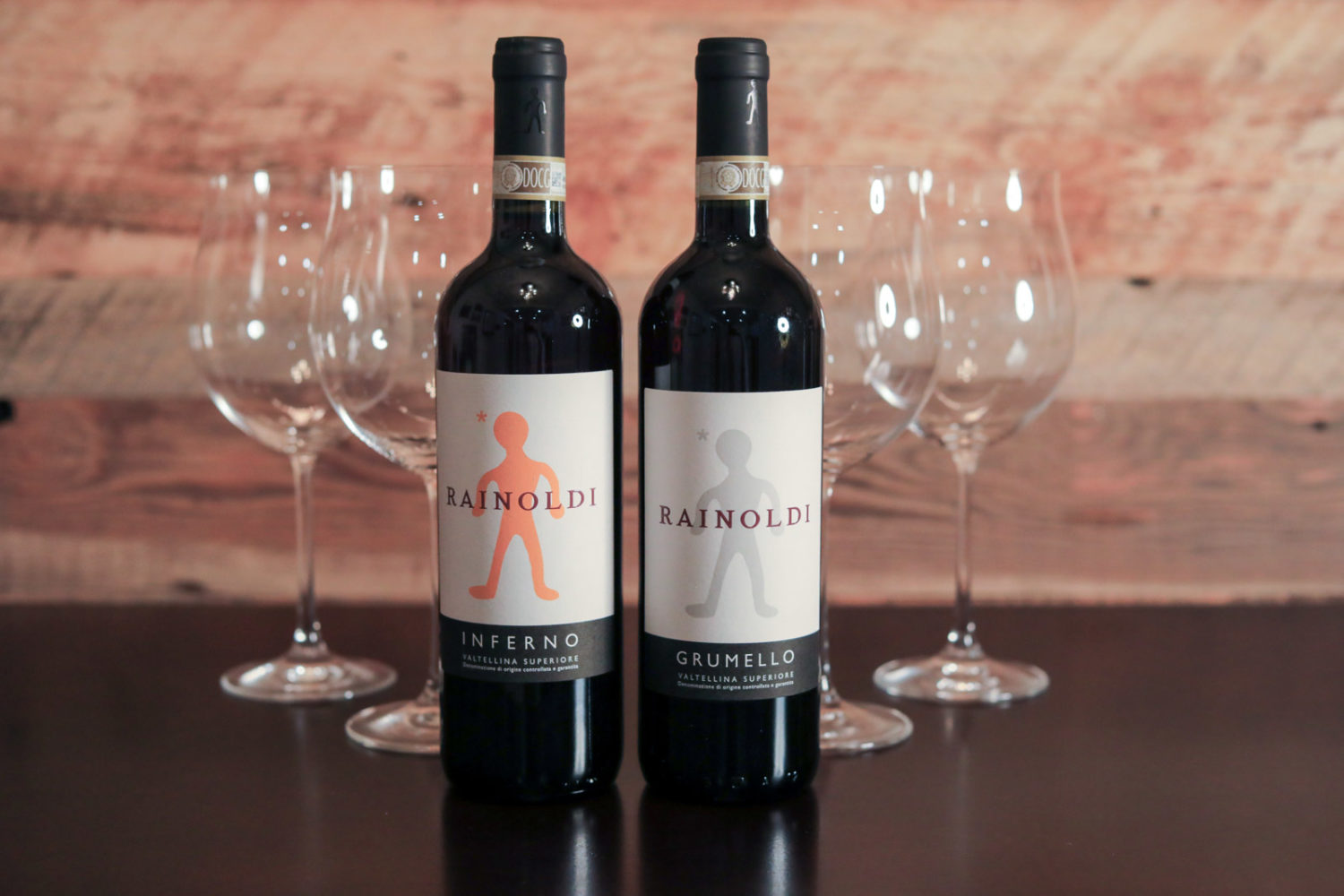
I recently dug into the entry-level 2015 Grumello (★★★★ 3/4) and found it to be one of Valtellina’s most tannic wines, although a solid emblem of the beautiful minerality and sour-bitter fruit typical of the region. Conversely, their 2015 Inferno (★★★★ 1/2) is a little simpler, a little leaner, but intriguing with its classic Nebbiolo tones.
Other Producers
Unlike the largest producing region of Nebbiolo wines (Piedmont), access to Valtellina is a little more scattered depending on where you live. The most widely available Valtellina Superiore will be those from Nino Negri, whose Inferno and Sassella wines are quite good, although compared to the heights of the wines listed above, they’re middle of the road, I’ve come to believe.
Mamete Provostini is another solid producer. Look for their “Sommarovina” Sassella (★★★★ 1/2).
Lastly, it is worth pointing out that Valtellina offers Nebbiolo lovers endless surprises. Last summer, on a visit to Lake Como, I came upon a producer whose distribution — as I understand it — is mostly local. But the tenor and complexity of Cantina Menegola’s Sassella Riserva (★★★★ 3/4) made me realize just how well things are going in the valley.
As interest in Nebbiolo increases, so too should the fortunes of this underrated appellation.
- Creating this article stemmed from nearly five hours worth of interviews with Isabella Pelizzatti Perego of ARPEPE (in 2017 and 2020), Marco Fay of Vini Sandro Fay and Cristina Scarpellini of Tenuta Scerscé.
- Also, Ian d’Agata’s indispensible and exhaustively researched books Native Wine Grapes of Italy and Italy’s Native Wine Grape Terroirs helped fill in many of the gaps.
- Finally, wines from Sandro Fay, Dirupi, Tenuta Scersce, Aldo Rainoldi and Alfio Mozzi were provided as samples upon request for this article by their American importers. Learn more about our editorial policy.

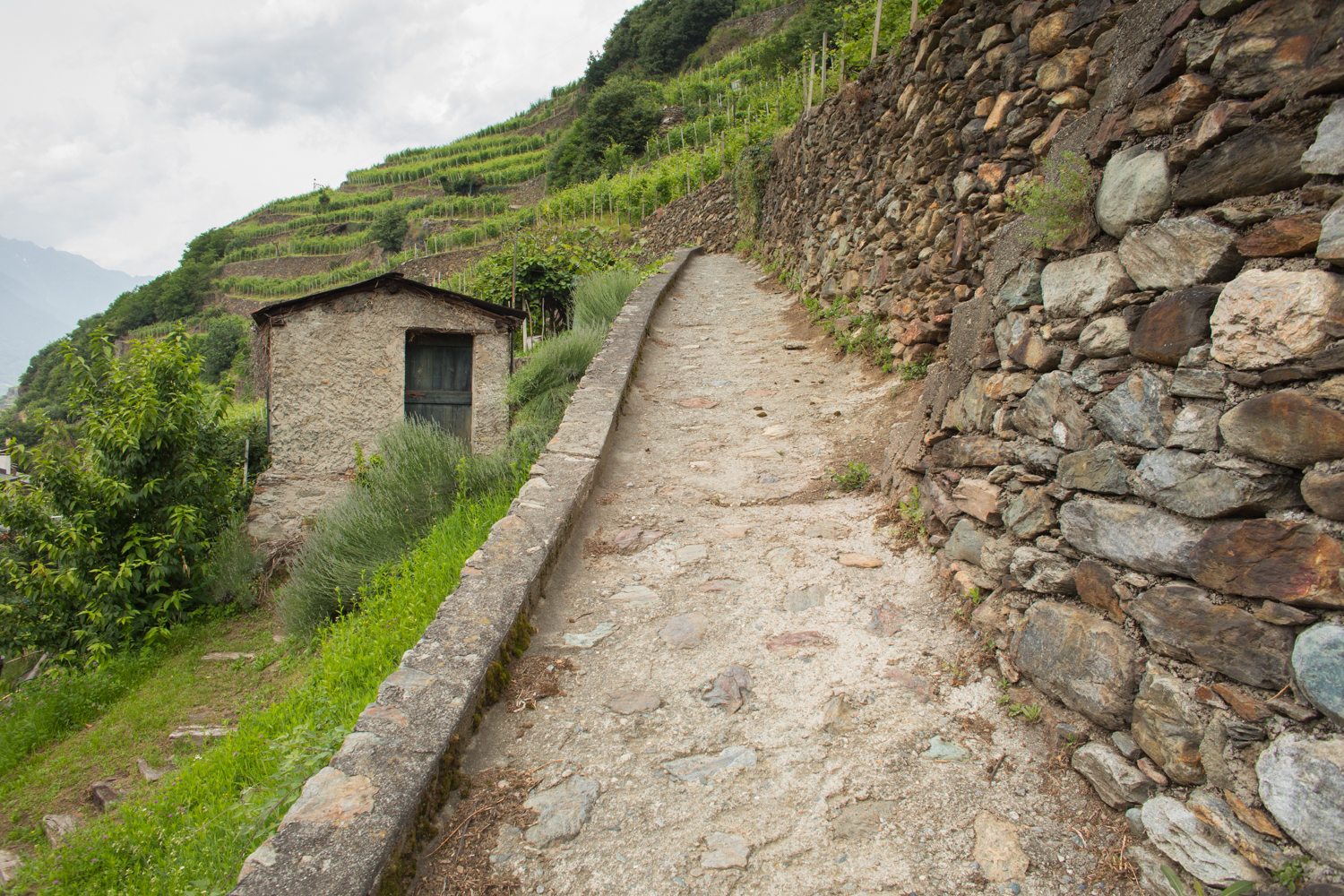
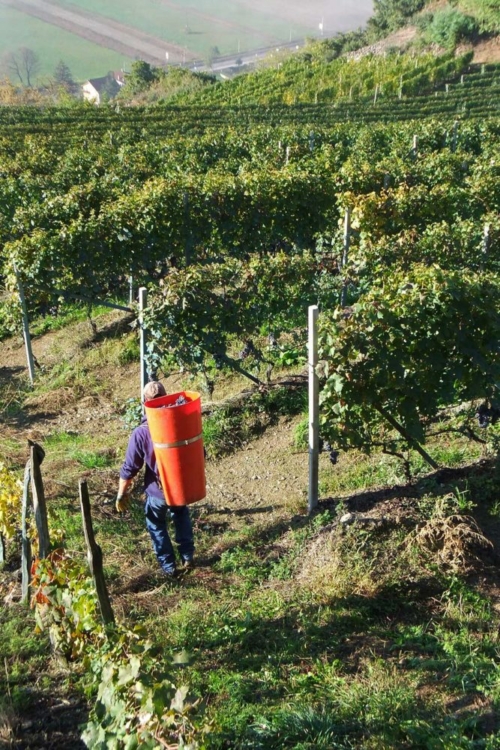
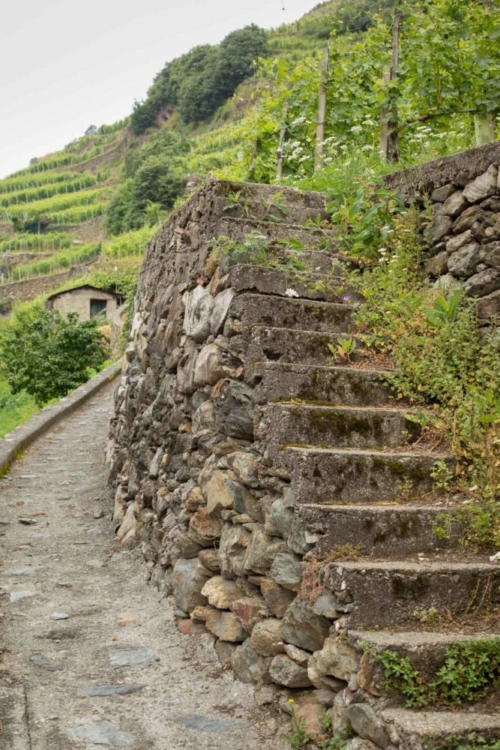
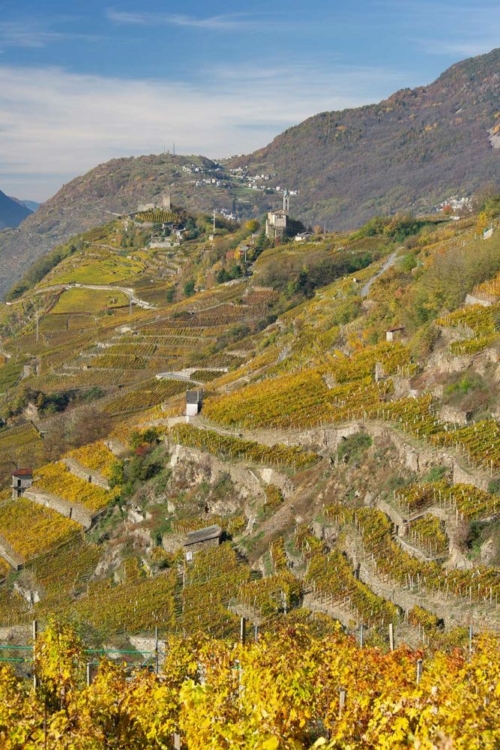
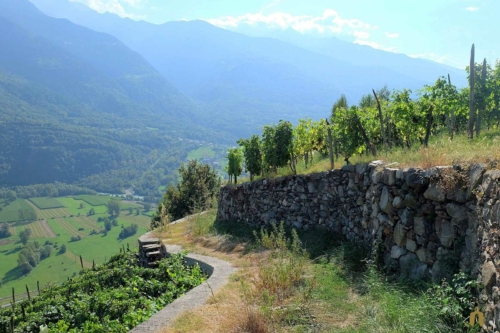
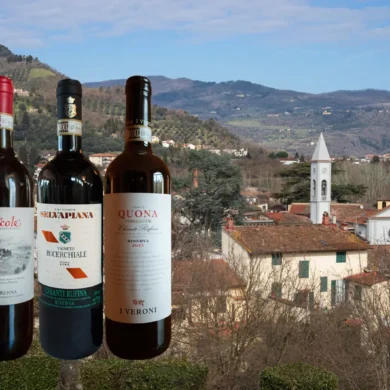
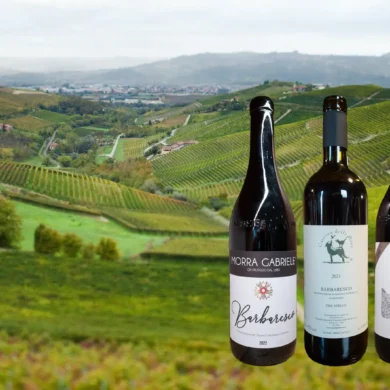
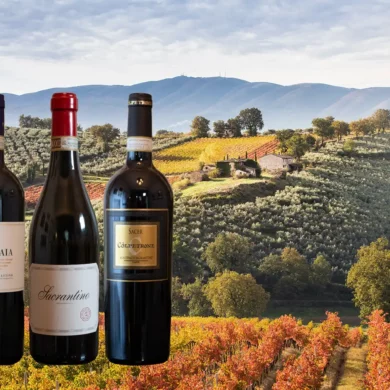
Kevin,
Enjoyed reading this article from Lombardy.
I was somewhat surprised that Nino Negri didn’t make the cut. I have had the opportunity to have enjoyed all of their wines from the Riserva to the flagship Stusat 5 Stelle from multiple vintages.
The only other Valtellina wine I have tasted was Sandro Fay at a restaurant unfortunately is was their entry level wine which makes comparisons more difficult.
Regards
Bob
Hi Bob,
Thanks for stopping by. Nino Negri is certainly a very important estate for Valtellina. Their wines are very good, and I did give them a brief mention toward the bottom. Nino Negri was actually my “first-taste” of Valtellina, and is frequently most people’s first encounter. This is because they are far and away the largest winery in the valley (owned by a large national syndicate, which can be a blessing and a curse). But from an editorial standpoint, three things happened: (a) I wasn’t able to procure samples from them in time, and may add them retroactively, but also (b) it wasn’t a priority to pursue them because I think the other wineries mentioned offered a more intimate look at Valtellina’s terraces and toil. If it were a “complete guide” yes, Nino Negri would have to be included. Absolutely. But this is a “who should you taste first?” kind of guide, in which case I think exploring these smaller family estates is more fun. Wishing you the best. Hope you can sample some more Valtellina wines in the near future. Cheers.
Great to see your review on this really ‘far away’ wine producing area.
There are probably 50-60 producers, many from them very small, some of them just 2 ha / 10.000 bottles a year.
Since a few years I am trying to know a little bit of them. I think you mad a good choice to present – from Arpepe which is just great to Fay who is producing very intensive wines (not my favorite – sorry)
Byside your propositions I also recommend
Buzzetti Siro with its Terrazze Alti
Mozzi Alfio with its Sassella Grisone
La Spia a very new producer
Ca Bianche di Davide Bana
And the Cooprativo Triasso et Sassella – all the three wines are within my favorites.
Try them wherever you will get them – something between Bordeaux and Burgundy in the best sense
Will try a new for me as I am just in the area.
Cheers from the Valtellina
Thank you Thomas. I’ll have to look for those. I did try Mozzi’s Sassella Grisone, and found it to be too riddled with brett to include. Always game for another try, however. Cheers
Finalmente un articolo scritto con competenza, professionalità e con una visione obiettiva del territorio! Bravo! Vivo in Valtellina e talvolta aiuto i miei parenti nella lavorazione della vigna di famiglia (zona Inferno). Le fatiche che i nostri antenati hanno fatto per realizzare e mantenere questi fazzoletti di terra sono inimmaginabili! Ma quando ammiro le foto (come quelle da te pubblicate) che ritraggono i nostri paesaggi alpini, sono grato dei loro sacrifici, perché quello che ammiro è un perfetto esempio di paesaggio ben antropizzato. E questo è un valore aggiunto al nostro territorio, oltre che al nostro buon vino. Affettuosi saluti.
Giuseppe. Grazie mille per il tuo commento e complementi. Il mio italiano non é molto bene, ma sono felice e onorato che qualcuno della Valtellina abbia letto questo articolo e lo abbia trovato competente e fedele allo spirito della terra e della gente. È un posto speciale e spero di tornarci presto. Grazie.